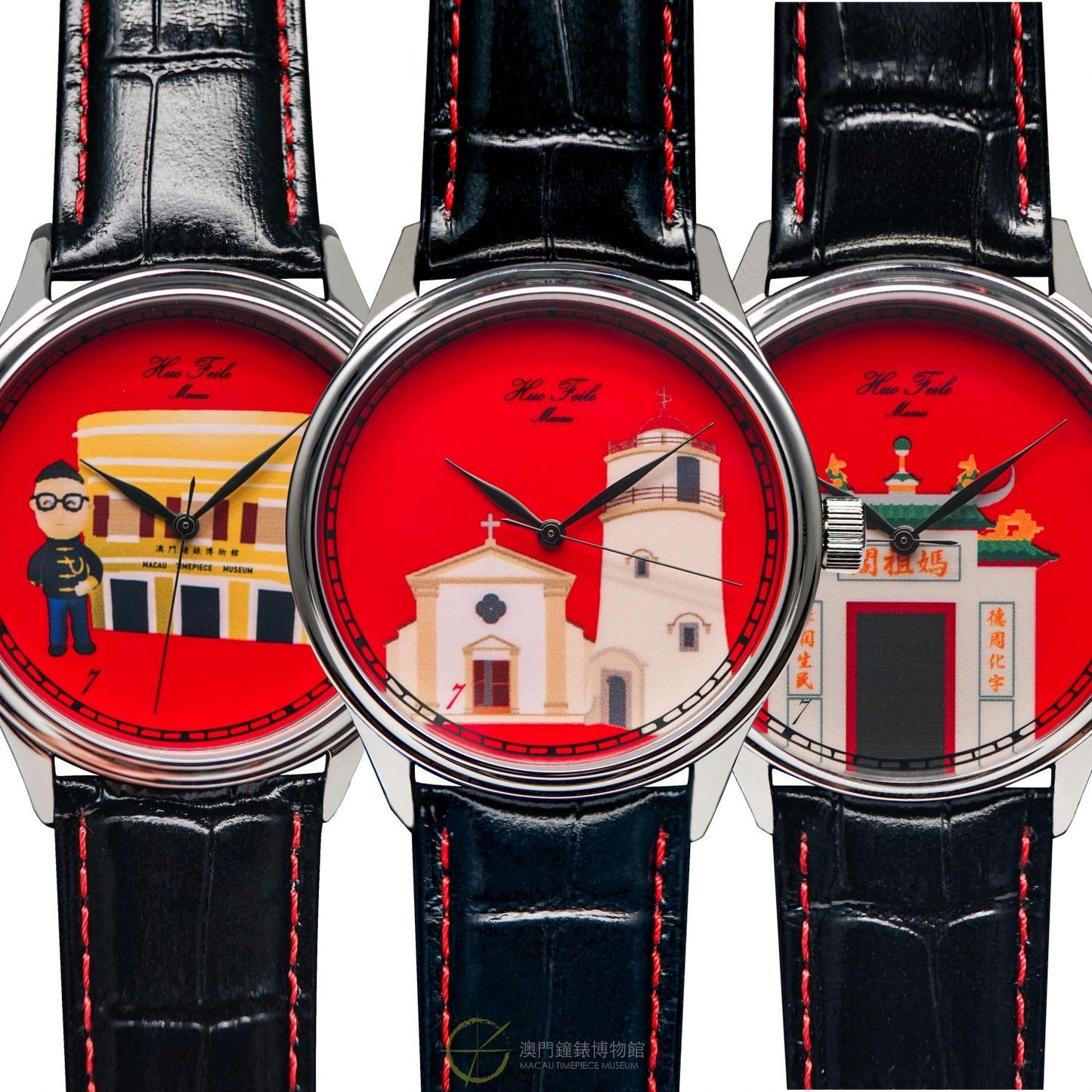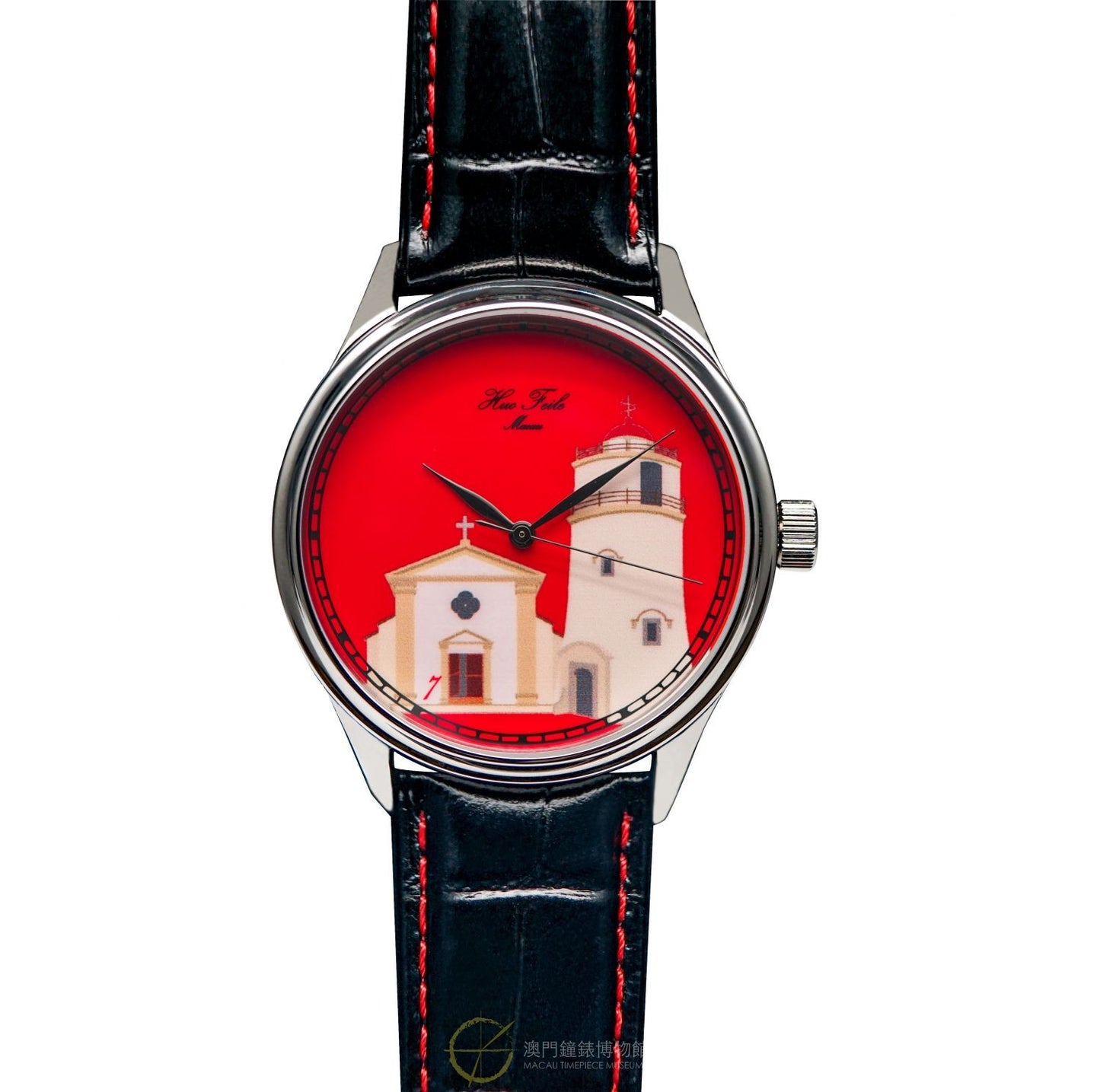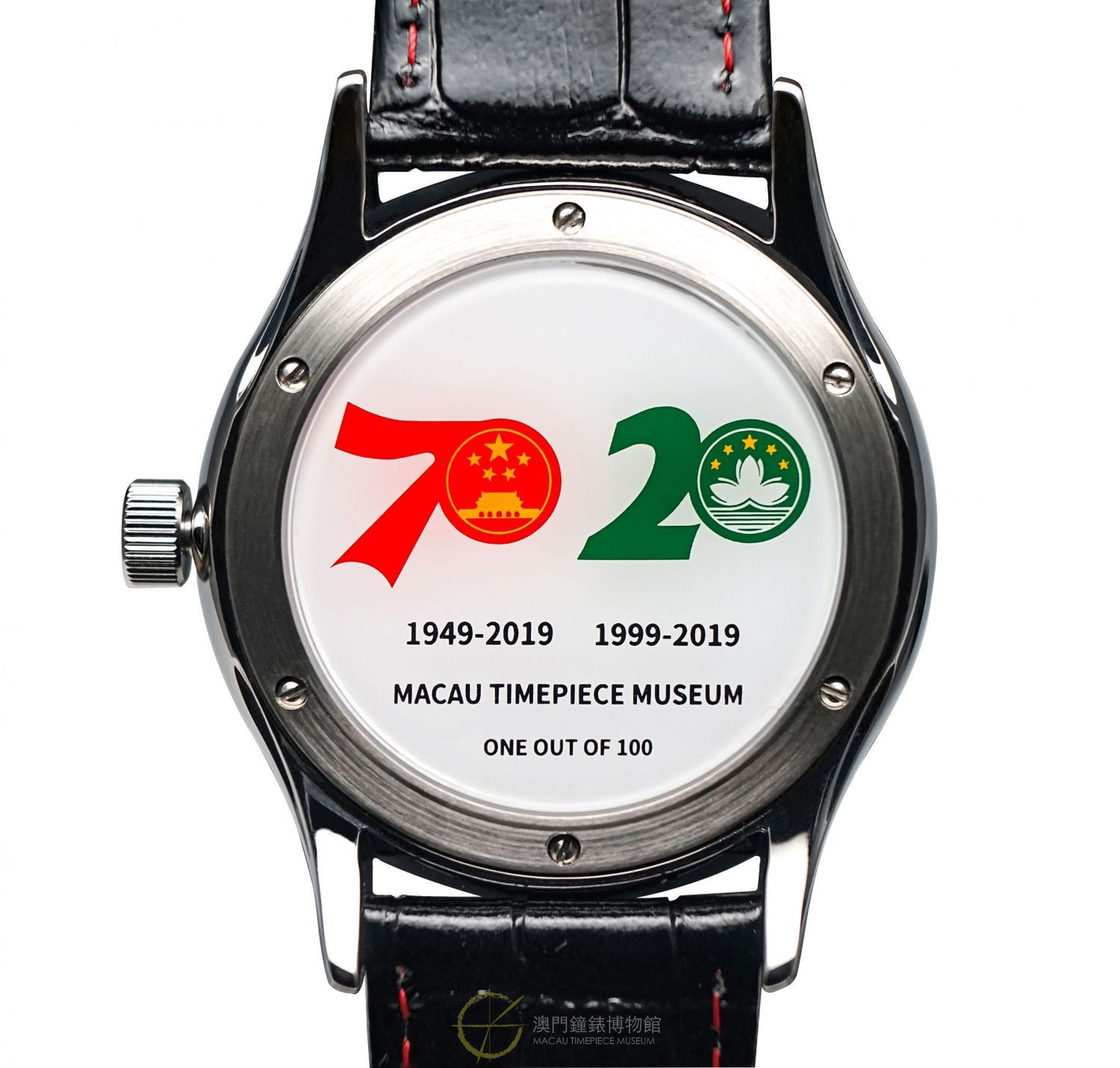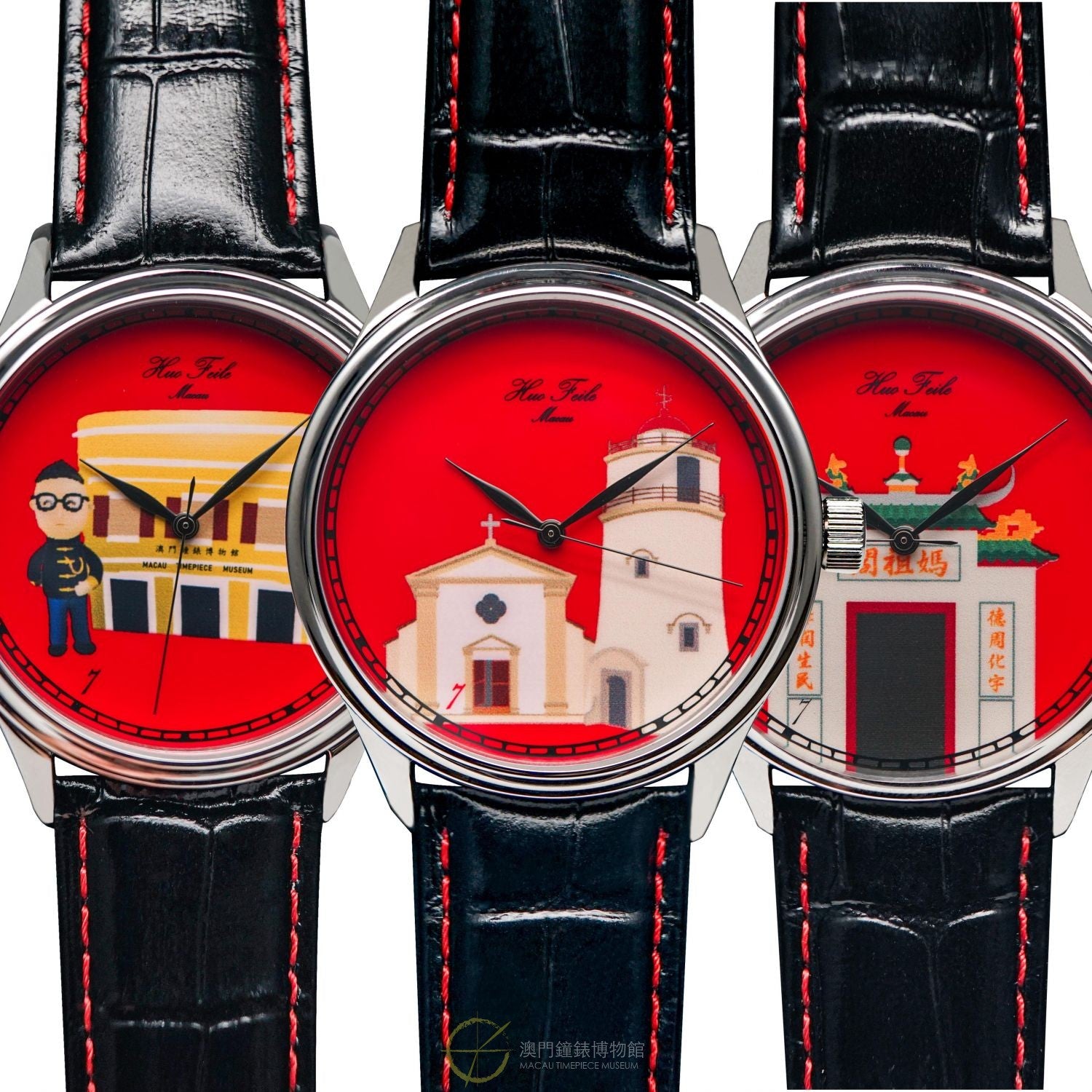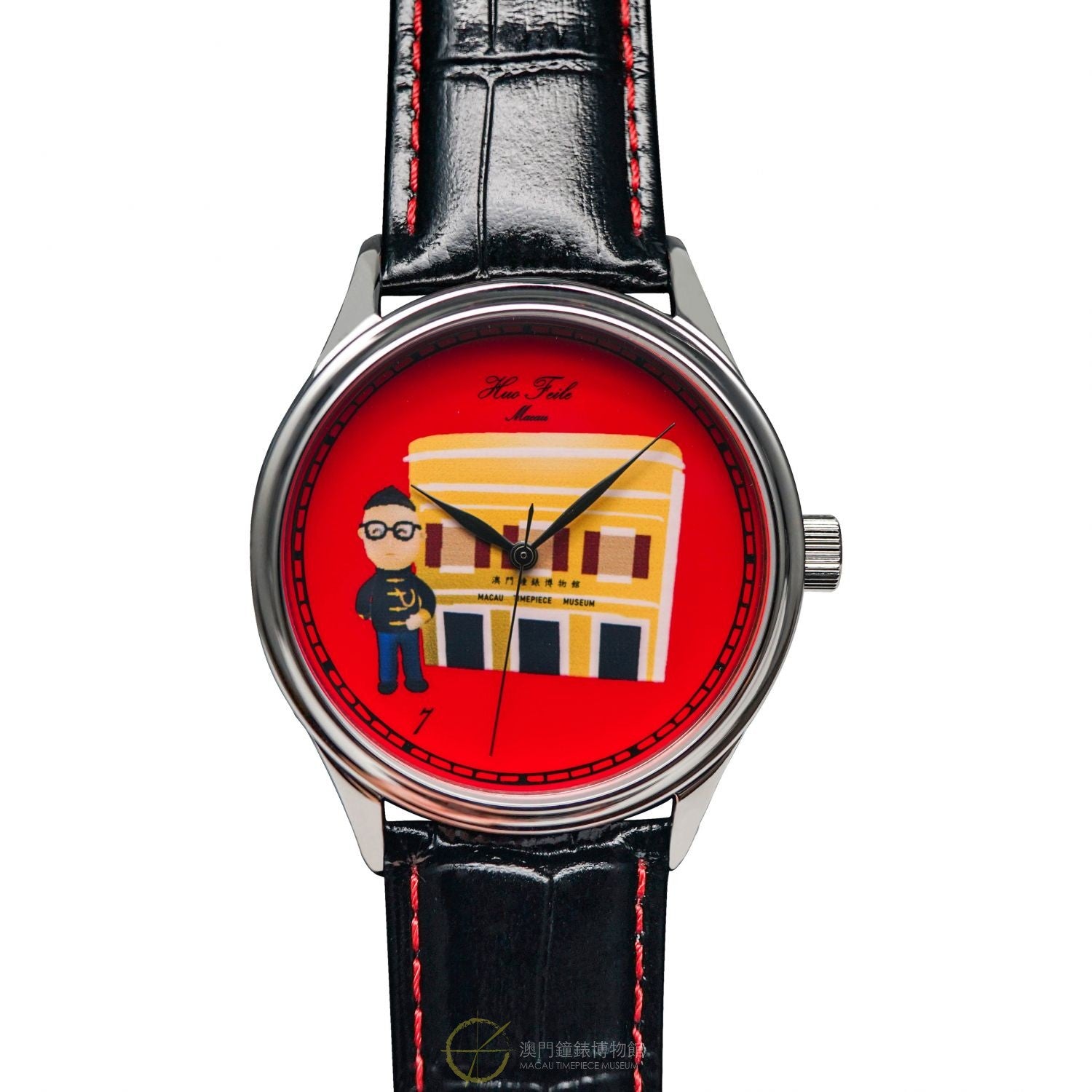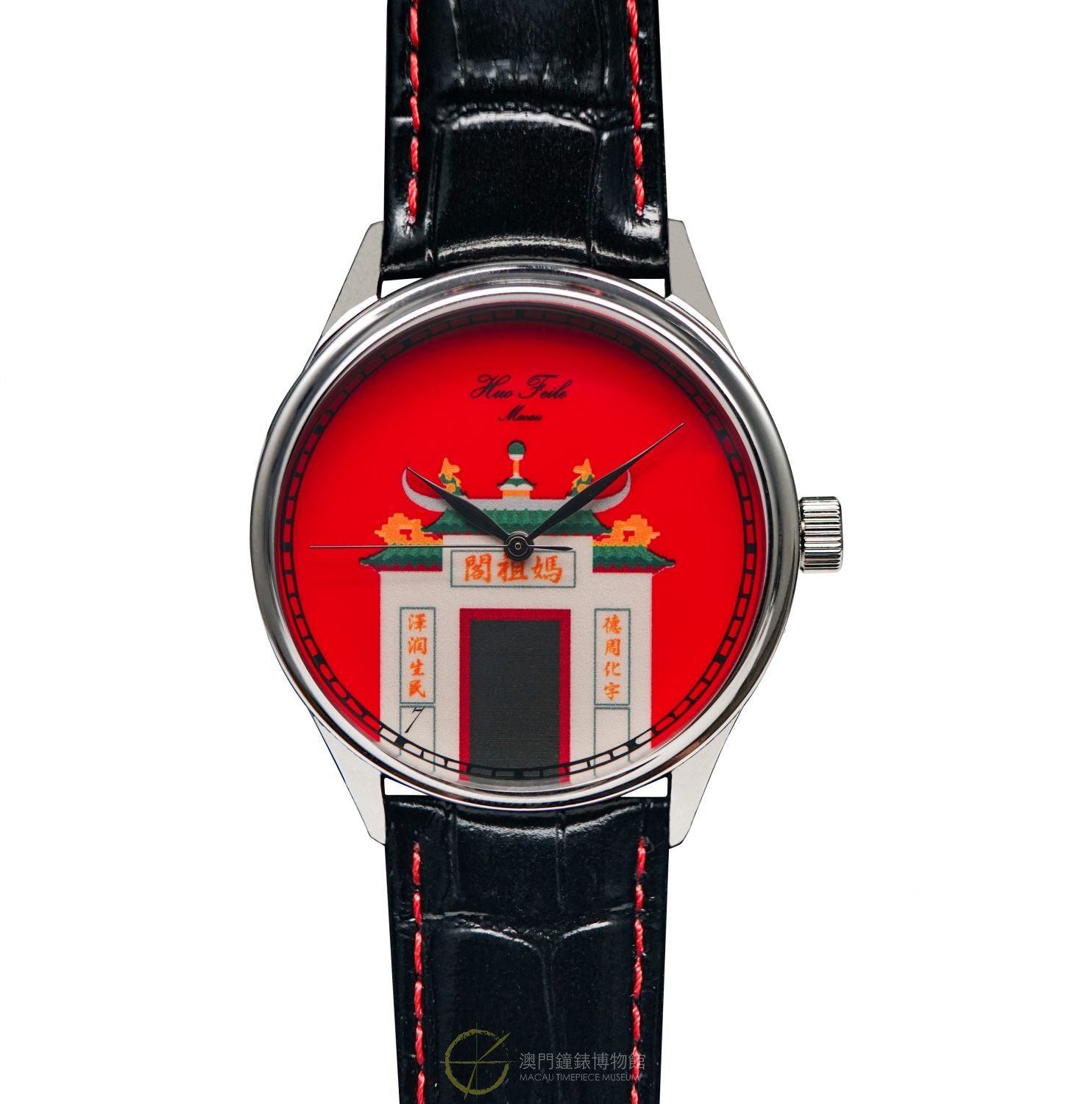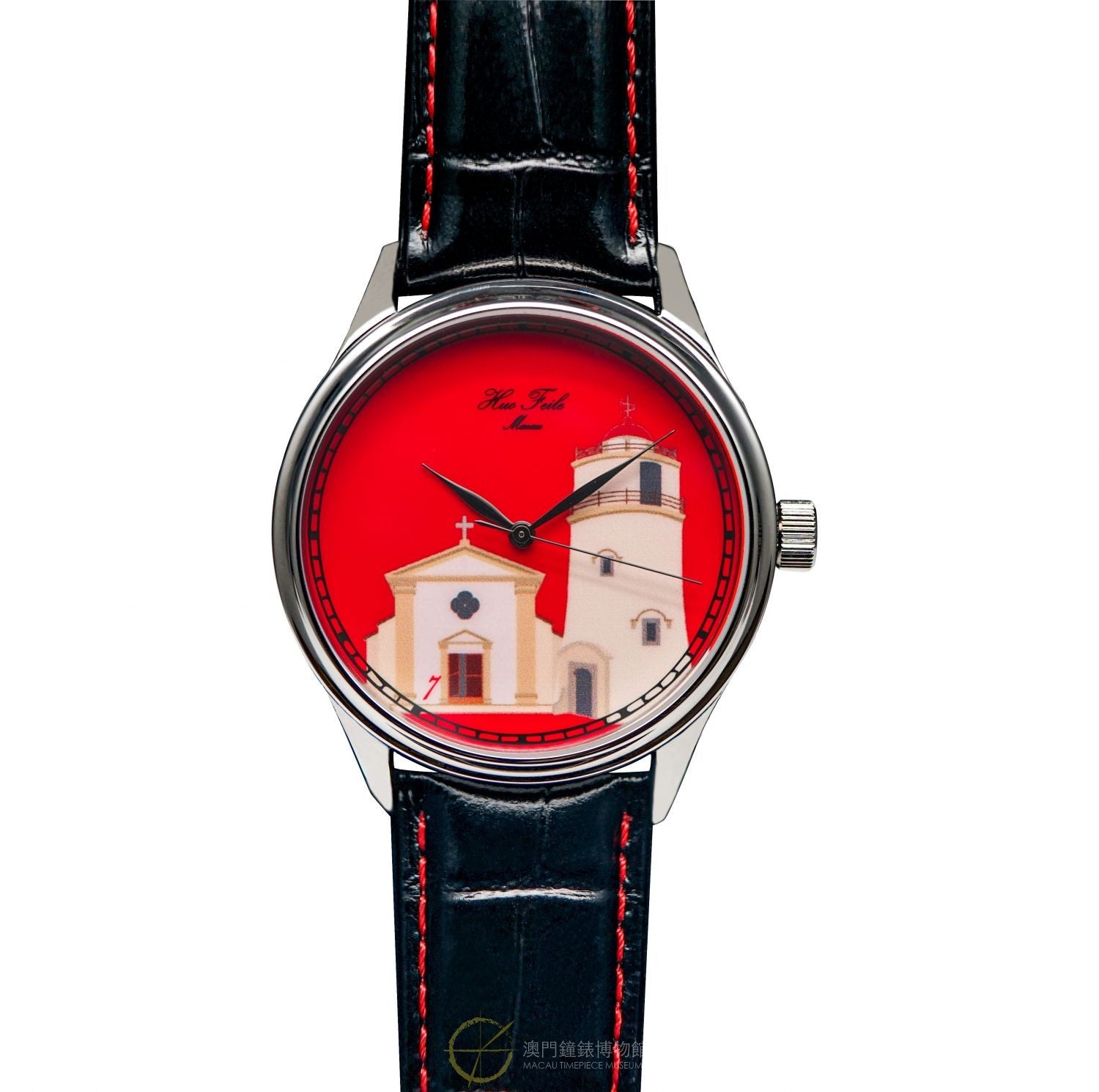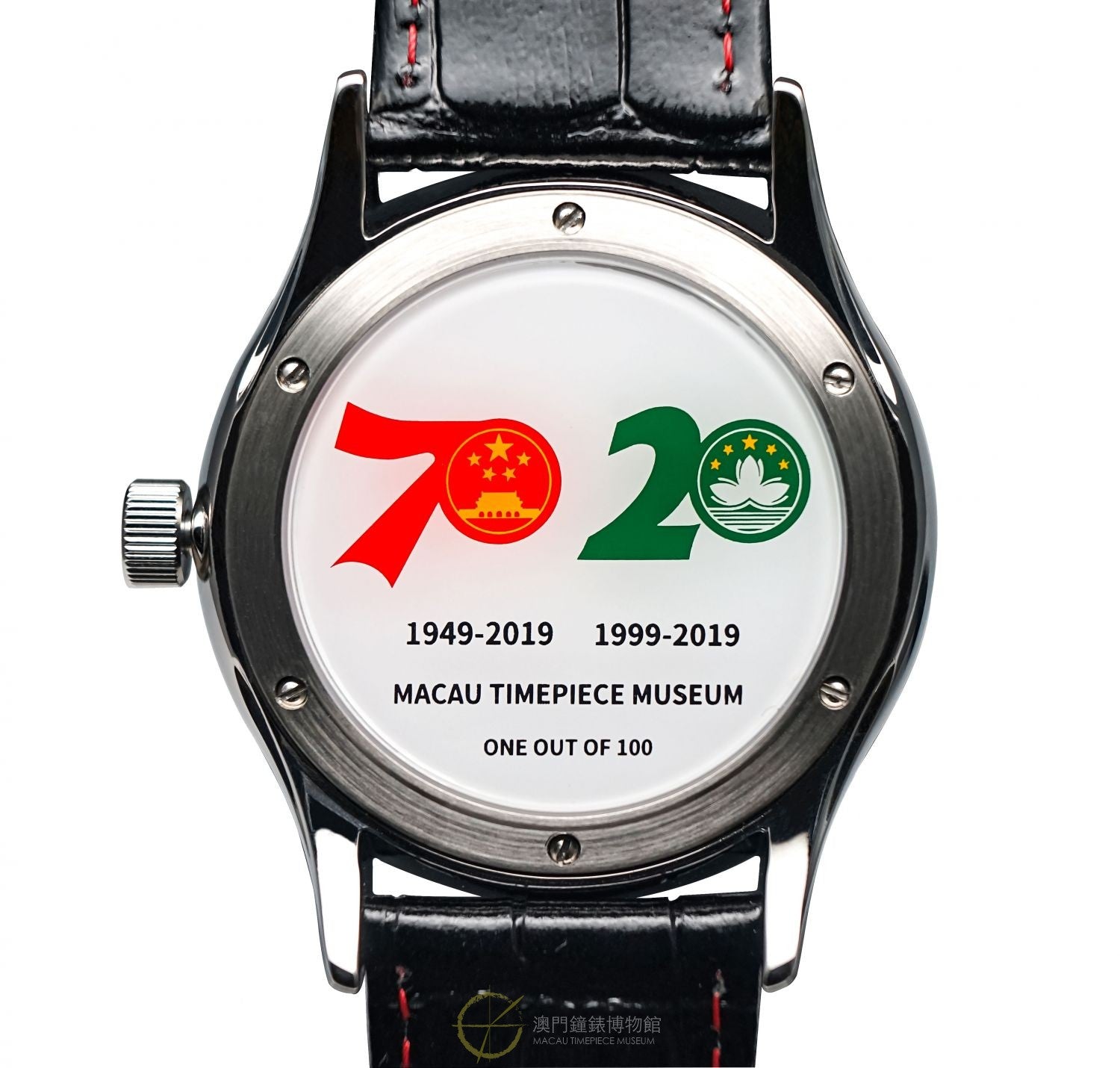Huo Feile
Huo FeiLe No.7
Huo FeiLe No.7
Couldn't load pickup availability
Huo’s Seven Anniversary Wristwatch
Macau independent watchmaker Mr. Huo Feile’s No. Seven work. 42mm size, 316L stainless steel case, self-winding caliber Cal. H7 with hour, minutes and seconds. In order to commemorate the 70th anniversary of the founding of the People's Republic of China and the 20th anniversary of Macau’s return to the motherland, There are three dial patterns of the historical buildings, depicting “A-Ma Temple”, “Guia Fortress” and “Macau Timepiece Museum” respectively, and each of them will be limited in edition of 100 pieces.
About A-Ma Temple
A-Ma Temple already existed before the city of Macao came into being. It consists of the Gate Pavilion, the Memorial Arch, the Prayer Hall, the Hall of Benevolence, the Hall of Guanyin, and Zhengjiao Chanlin (a Buddhist pavilion). The variety of pavilions dedicated to the worship of different deities in a single complex make A-Ma Temple an exemplary representation of Chinese culture inspired by Confucianism, Taoism, Buddhism, and multiple folk beliefs.
About Guia Fortress
Guia Fortress (including Guia Chapel and Lighthouse)
The fortress was built between 1622 and 1638. Inside the fortress stands Guia Chapel, originally established by Clarist nuns, who resided at the site before establishing the Convent of St. Clare. The chapel's elaborate frescoes depict representations of both western and Chinese themes, displaying motifs of religious and mythological inspiration that are a perfect example of Macao's multicultural dimension. Guia Lighthouse, dating from 1865, which also stands within the perimeter, is the first modern lighthouse on the Chinese coast. Guia Fortress, along with the chapel and lighthouse are symbols of Macao's maritime, military and missionary past.
About the building of Macau Timepiece Museum
Macau Timepiece Museum is in the area of Travessa de S. Paulo.
Originally, some buildings in this area were parts of the old St. Paul’s College complex, which included a clinic and a treasury among the other units. Due to the fire that occurred in the old Church of Mater Dei in 1835, most of these ancillary facilities were destroyed. The existing buildings now were built in a style like the architecture of the houses in St. Lazarus’ District, and are considered to be inspired by the Modern movement during the 1940s and 50s in Macao.
